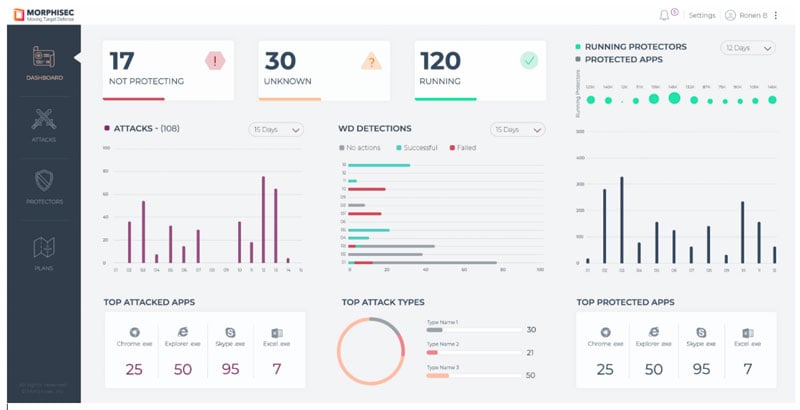Morphisec + Microsoft Defender AV: Advanced Threat Protection Made Easy
Enterprises migrating to or already using Windows 10 have the perfect opportunity to greatly improve their security profile and simplify operations at the same time – without incurring more costs. The key is fully leveraging the integrated Windows 10 security tools while adding innovative technology purpose built to provide a critical protection layer against advanced memory attacks, exploits, fileless attacks, zero-days and evasive malware. Those integrated security tools include Microsoft Defender antivirus and that disruptive technology is Morphisec’s Moving Target Defense.
Morphisec Will Be at Ivanti Interchange on April 29-May 2, Booth 7
If you don’t know about Moving Target Defense, you will soon. And if you’re going to be at Ivanti Interchange later this month, you’ll get to see it in action when Morphisec brings its Moving Target Defense-based Threat Prevention platform to Interchange 2019 in Nashville.
Combatting Advanced Threats
The need for faster, easier and more deterministic threat prevention is essential not only to reduce risk but to reduce the operational overhead that comes with detecting, analyzing and remediating threats. If you prevent attacks from getting into your organization in the first place, then your attack dwell time collapses to zero – no response required. The difficulty here is unknown advanced attacks that are engineered to bypass defenses. Morphisec uses Moving Target Defense to preemptively prevent unknown evasive attacks, exploits, fileless attacks, browser threats and zero days – the kind of threats that are responsible for most breaches.
Leverage and Expand on Your Built-In Windows 10 Security
Too many security products have overlapping functionality that adds unnecessary complexity and cost. By replacing legacy antivirus products with free integrated Microsoft Defender AV and adding Morphisec for a critical layer of advanced attack protection, you can make your organization far safer and more operationally efficient at no added cost.
Microsoft Defender AV delivers leading file-based protection and heuristics, along with cloud look-ups to detect recently discovered malware. Because Windows Defender is already embedded within the Windows 10 OS, switching from third party antivirus is as simple as turning on features from within Windows 10 and patching/updating become a non-barrier to continuous protection.
Morphisec is powered by Moving Target Defense, a highly innovative cyber defense technology that makes the targets of attacks dynamic and unpredictable, so threats are unable to execute. It prevents unknown zero-days and evasive attacks at their very earliest stages, without needing to identify, detect or hunt for threats. It’s lightweight to deploy, does not require internet connectivity, easy to manage and has no impact on endpoint performance.
Combined, they deliver a superior, streamlined protection stack for security conscious, budget conscious, and operationally conscious security and IT teams.
Get Visibility Into All Threats
One barrier to adoption of Microsoft Defender Antivirus has been its lack of integrated reporting for visibility into the attacks it prevents. Morphisec has remedied this with our new Defender AV integration, which consolidates Defender AV threats into the Morphisec management dashboard for visibility across all alerts.

Make sure to attend our session on Tuesday, Apr 30, 3:15 PM - 04:15 PM, in Governors E, to get a first look at the integration and how it works.
Morphisec and Ivanti for a Robust Security Strategy
Ivanti security solutions and Morphisec Threat Prevention platform together provide a comprehensive, resilient strategy to combat today’s cyberattack trends as well as tomorrow’s. Ivanti delivers industry-leading solutions, integrating endpoint security controls that global experts agree create the highest barriers to real-world attacks (discovery, patch and privilege management, whitelisting, and secure configuration).
Morphisec is an Ivanti One Partner and a Gold Sponsor of Interchange 2019 in Nashville.
